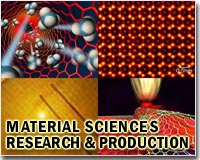 |
London UK (SPX) Oct 28, 2010 Power plants that burn fossil fuels remain the main source of electricity generation across the globe. Modern power plants have scrubbers to remove sulfur compounds from their flue gases, which has helped reduce the problem of acid rain. Now, researchers in India have devised a way to convert the waste material produced by the scrubbing process into value-added products. They describe details in the International Journal of Environment and Pollution. Fossil fuels contain sulfur compounds that are released as sulfur dioxide during combustion. As such, flue gas desulfurisation (FGD) has become mandatory in most of the developed world. There are numerous methods, but most are based on wet limestone and caustic scrubbing. Wet limestone scrubbing generate s large quantities of solid gypsum waste, while wet caustic scrubbing generates alkaline waste containing aqueous mixture of bisulfite, sulfite and sulfate. Sulfate can be removed from water by desalination processes such as reverse osmosis and ion exchange, but these are expensive. Rima Biswas of the National Environmental Engineering Research Institute (NEERI), in Nagpur, in India, and colleagues have designed a chemo-biological approach for treating the sulfate-rich effluent generated during wet scrubbing of flue gas emissions from fossil fuel fired power plants. The technique involves microbial sulfate reduction using an anaerobic up-flow packed bed bioreactor containing microbes, with ethanol as the carbon source essential for microbial growth. The team found that more than 90% of the total equivalent sulfate present in the effluent was reduced to sulfide at a rate of up to 3 kilograms per day per cubic meter of sulfate residue. In this form the waste can be easily converted into elemental sulfur for industrial use or into metal sulfide nanoparticles for research.
earlier related report Scanning probe microscopy (SPM) won the Nobel Prize in 1986. It uses a nano-sized probe to feel the surface of a material - akin to a finger reading Braille on an extremely small scale. The technique can also measure the electrical properties of materials used in nanotechnology - and "feel" how the materials react when electricity is passed through it. SPM opens up a lot of new opportunities for new devices as we can now find out how electrical materials are working at the nanoscale. The one piece of missing information is that of measuring reliable values. NPL researchers have now discovered that by combining textural analysis, through electron backscatter diffraction (EBSD), with piezoresponse force microscopy, quantitative measurements of the piezoelectric properties can be made at a scale of 25 nm, smaller than the domain size i.e. the electrical features that dictate the materials properties. The combined technique is used to obtain data on the domain-resolved effective single crystal piezoelectric response of individual crystallites in Pb(Zr0.4Ti0.6)O3 ceramics. The results offer insight into the science of domain engineering and provide practical information for the future development of new nano-structured ferroelectric materials for memory, nano-actuators, and sensors. Tim Burnett from NPL said, "As the drive to miniaturize devices continues we will need to make changes in how they are made to increase performance levels, so measuring how electrical materials behave on the nanoscale is essential. The problem with making things that are nano-sized is that it is very difficult to measure their performance. Our research at NPL will therefore enable genuine comparisons to be made and promote a better understanding of the nanotechnology of electrical materials and devices."
Share This Article With Planet Earth
Related Links National Environmental Engineering Research Institute (NEERI) Space Technology News - Applications and Research
 China protecting strategic interests with rare earths policy
China protecting strategic interests with rare earths policyXiamen, China (AFP) Oct 24, 2010 China's restrictions on exports of rare earths are aimed at maximising profit, strengthening its homegrown high-tech companies and forcing other nations to help sustain global supply, experts say. China last year produced 97 percent of the global supply of rare earths - a group of 17 elements used in high-tech products ranging from flat-screen televisions to iPods to hybrid cars - but is h ... read more |
|
| The content herein, unless otherwise known to be public domain, are Copyright 1995-2010 - SpaceDaily. AFP and UPI Wire Stories are copyright Agence France-Presse and United Press International. ESA Portal Reports are copyright European Space Agency. All NASA sourced material is public domain. Additional copyrights may apply in whole or part to other bona fide parties. Advertising does not imply endorsement,agreement or approval of any opinions, statements or information provided by SpaceDaily on any Web page published or hosted by SpaceDaily. Privacy Statement |